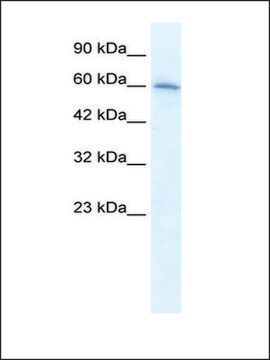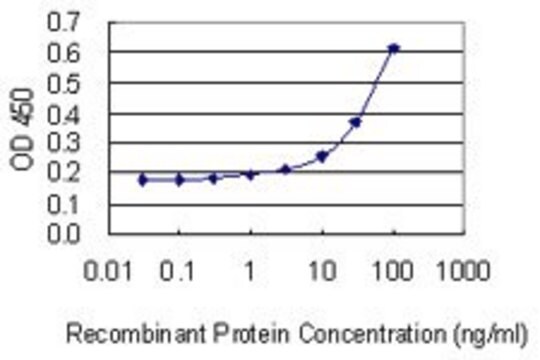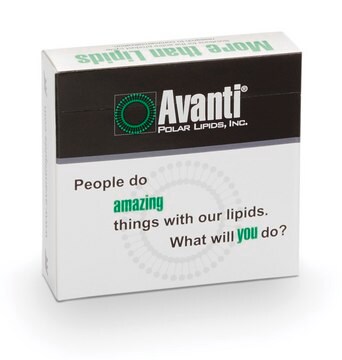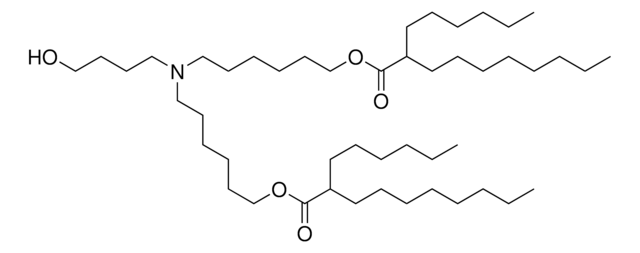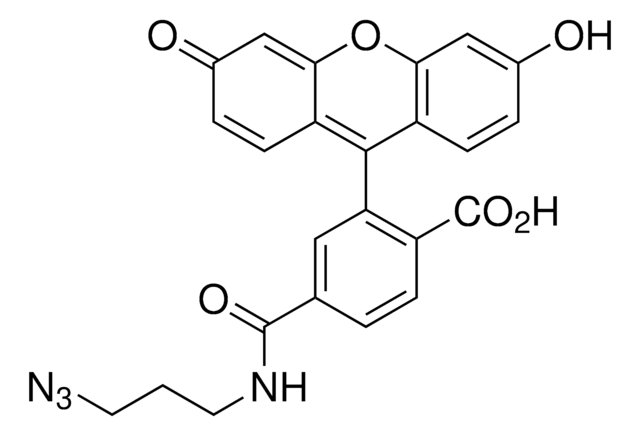AB15332
Anti-Nicotinic Acetylcholine Receptor α7 Antibody
Chemicon®, from rabbit
Sign Into View Organizational & Contract Pricing
All Photos(1)
About This Item
UNSPSC Code:
12352203
eCl@ss:
32160702
NACRES:
NA.41
Recommended Products
biological source
rabbit
Quality Level
antibody form
affinity isolated antibody
antibody product type
primary antibodies
clone
polyclonal
purified by
affinity chromatography
species reactivity
rat, mouse, human
manufacturer/tradename
Chemicon®
technique(s)
western blot: suitable
NCBI accession no.
UniProt accession no.
shipped in
wet ice
target post-translational modification
unmodified
Gene Information
mouse ... Chrna7(11441)
Specificity
This rabbit polyclonal antibody specifically detects Nicotinic Receptor 7. It targets an epitope with 28 amino acids from the C-terminal half.
Immunogen
KLH-conjugated linear peptide corresponding to 28 amino acids from the C-terminal half of human Nicotinic Receptor 7.
Application
Quality Control Testing
Evaluated by Western Blotting in Rat brain tissue lysate.Western Blotting Analysis: A 1:500 dilution of this antibody detected Nicotinic Acetylcholine Receptor 7 in Rat brain tissue lysate.
Evaluated by Western Blotting in Rat brain tissue lysate.Western Blotting Analysis: A 1:500 dilution of this antibody detected Nicotinic Acetylcholine Receptor 7 in Rat brain tissue lysate.
Target description
Neuronal acetylcholine receptor subunit alpha-7 (UniProt: P36544; also known as -Nicotinic Receptor Alpha 7, Nicotinic AChR alpha7) is encoded by the CHRNA7 (also known as NACHRA7) gene (Gene ID: 1139) in human. Nicotinic acetylcholine receptors are cation-selective, ligand-gated ion channels that mediate fast neurotransmission. They are distributed at the post-synaptic membrane of muscle cells. A similar neuronal-type ACh receptor is also found in the central nervous system and is involved in a wide range of physiological and pathological functions. They are assembled either as homo-pentamers of 7, 8, and 9 or hetero-pentamers of 2 6 in combination with β2 β4 or 9 with 10 subunits. They regulate the flow of sodium, potassium, and calcium ions across the cell membrane. The binding of ligands to these receptors triggers a tertiary conformational transition of neuronal AChRs among functionally distinct resting, open, and desensitized states. Nicotinic AChR 7 is a multi-pass, homopentameric, membrane glycoprotein that is synthesized with a signal peptide (aa 1-22), which is subsequently cleaved off to produce the mature protein that contains an extracellular domain (aa 23-230), four transmembrane domains (aa 231-255; 262-280; 296-317; and 470-490), and one cytoplasmic domain (aa 318-469). (Ref.: Ho, TN., et al. (2020). Front. Neurosci. 14; 609005; Unwin, N. (2013). Q. Rev. Biophys. 46(4); 283-322).
Linkage
Replaces: AB5637
Physical form
Purified rabbit polyclonal antibody in buffer containing 0.02 M phosphate buffer, pH 7.6, 0.25 M NaCl, and 0.1% sodium azide.
Storage and Stability
Recommended storage: +2°C to +8°C.
Other Notes
Concentration: Please refer to the Certificate of Analysis for the lot-specific concentration.
Legal Information
CHEMICON is a registered trademark of Merck KGaA, Darmstadt, Germany
Not finding the right product?
Try our Product Selector Tool.
Storage Class Code
10 - Combustible liquids
WGK
WGK 2
Flash Point(F)
Not applicable
Flash Point(C)
Not applicable
Certificates of Analysis (COA)
Search for Certificates of Analysis (COA) by entering the products Lot/Batch Number. Lot and Batch Numbers can be found on a product’s label following the words ‘Lot’ or ‘Batch’.
Already Own This Product?
Find documentation for the products that you have recently purchased in the Document Library.
Brijesh K Garg et al.
The journal of histochemistry and cytochemistry : official journal of the Histochemistry Society, 65(9), 499-512 (2017-08-02)
Alpha7 nicotinic acetylcholine receptors (α7 nAChRs) are important drug targets in neurological disorders and inflammation, making their detection and localization by validated antibodies highly desirable. However, tests in knockout animals raised questions about specificity of antibodies to mouse α7 nAChRs.
Our team of scientists has experience in all areas of research including Life Science, Material Science, Chemical Synthesis, Chromatography, Analytical and many others.
Contact Technical Service